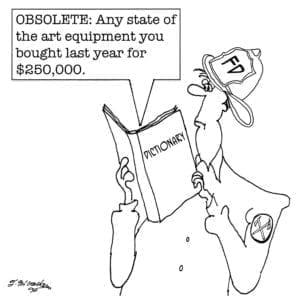 Price is a huge factor when it comes to deciding between sticking with traditional telephony services and making the jump to IP telephony. It’s one of the biggest selling points IP telephony providers use to push their technology, and it’s one of the clearest, firmest, more directly measureable ways decision-makers at an organization can see the benefit of switching over to IP. After all, while organizational flexibility and scalability are great benefits they can seem a little abstract, factors whose potential may be difficult to envision when a business is currently locked into a relatively fixed traditional telephony technology set-up.
Price is a huge factor when it comes to deciding between sticking with traditional telephony services and making the jump to IP telephony. It’s one of the biggest selling points IP telephony providers use to push their technology, and it’s one of the clearest, firmest, more directly measureable ways decision-makers at an organization can see the benefit of switching over to IP. After all, while organizational flexibility and scalability are great benefits they can seem a little abstract, factors whose potential may be difficult to envision when a business is currently locked into a relatively fixed traditional telephony technology set-up.
Starting With Dollars and Cents
This leaves us with price, the great dollars-and-cents equalizer that can help convert even the most conservative manager into a believer. Traditional telephony services are costing us $X/month, IP telephony will cost us $Y/month. Yet even though IP telephony provides a superior price options compared with traditional telephony, the whole debate over systemic cost isn’t quite as simple as it may sound. The dollars-and-cents comparison is clear, but the context surrounding this debate is a little murkier.
Now, we’re not saying this to dissuade anyone from signing up for IP telephony. Rather, we’ve just found it’s wise to cut through the blunt “IP telephony saves you money!” hype and get to the more subtle, yet more honest and accurate discussion of what those cost savings mean in the real world.
If nothing else this understanding of IP telephony’s cost savings provides a superior position to convince decision makers that making the switch to IP telephony is worthwhile. Many decision makers appreciate the thought of saving money with a technological switch but most are conservative when it comes to switching away from a technology that’s already working “good enough” for them at the moment, and this is doubly true when the technological switch involves an upfront capital expenditure, as making the switch to IP telephony sometimes does. Getting past this skittishness often requires thinking with a certain caution and sense of nuance, two qualities that are unfortunately easy to lose sight of in the excitement over everything IP telephony has to offer.
Remembering Context
First up, you need to consider the fact the savings your organization will experience making the switch to VoIP are highly relative. We’re going to break this issue down extremely simply.
Let’s say your current traditional telecom services cost you $400 a month. And let’s say the IP PBX service you’re considering switching over to will cost you $200 a month. Great!
By making the switch you may have just saved your company $200 a month unless, of course, in six months your current traditional telecom provider cuts their prices to $200 as well.
Considering the capital investments required to make the switch to IP telephony you just cost your company money. That means that unless there is value elsewhere in the package, straight dollars to dollar comparison isn’t necessarily guaranteeing you a win… New technology comes with the new set of data network requirements and interfaces. At the same time it offers new opportunities which may save you money but only if these opportunities are realized. If you continue to use your new IP PBX system the same way you have been using your old one – there is not necessarily going to be any practical advantage for your company to upgrade.
This doesn’t mean you shouldn’t make the switch and it doesn’t mean making the switch won’t work out in a dollars-and-cents estimation, it just means you need to take a more multi-faceted view of this switch and what it may cost or save your company. When it comes down to it this reality simply means you need to make a convincing enough case for making the switch so that the annual-cost-argument is the cherry on top- not the sundae itself.